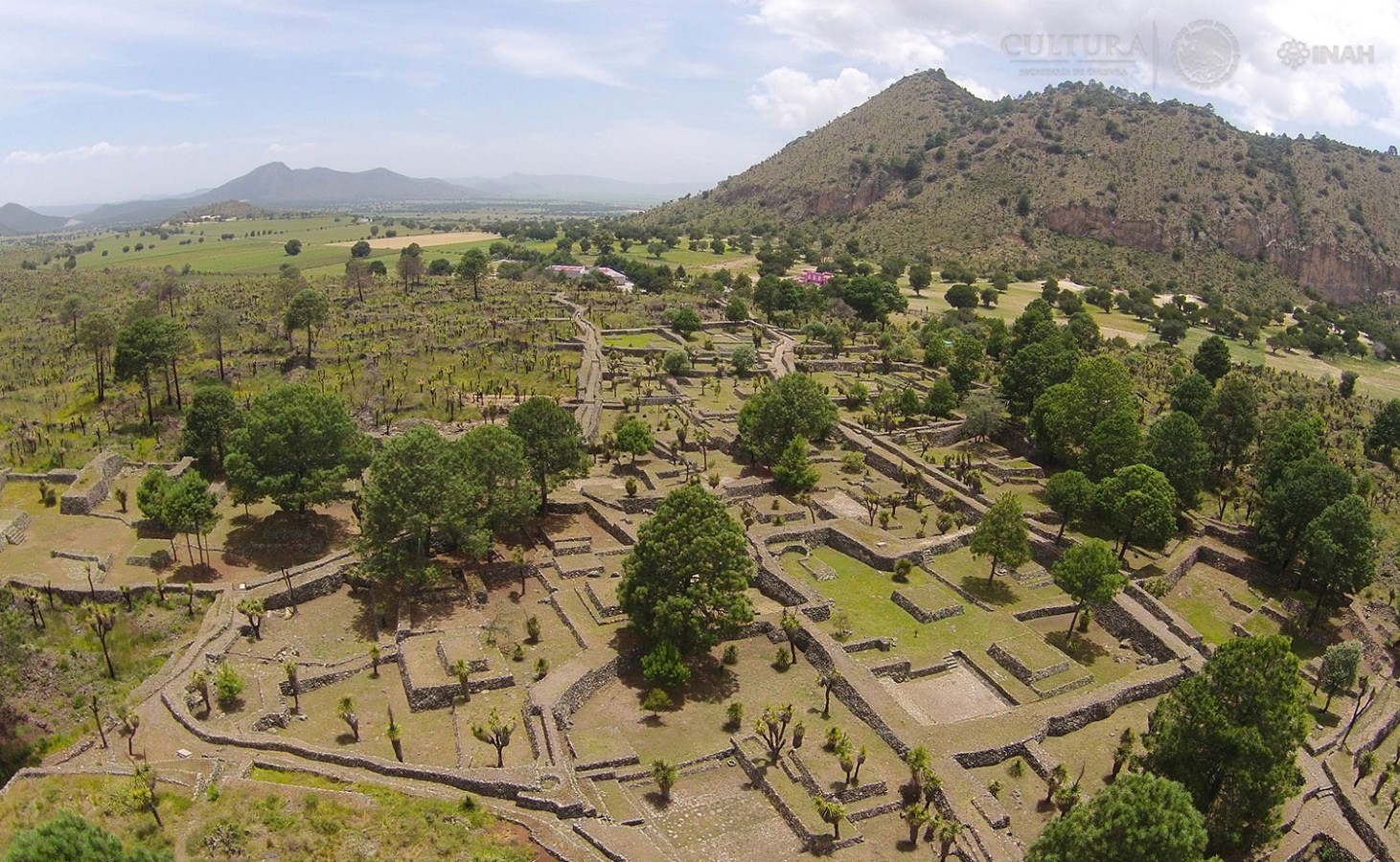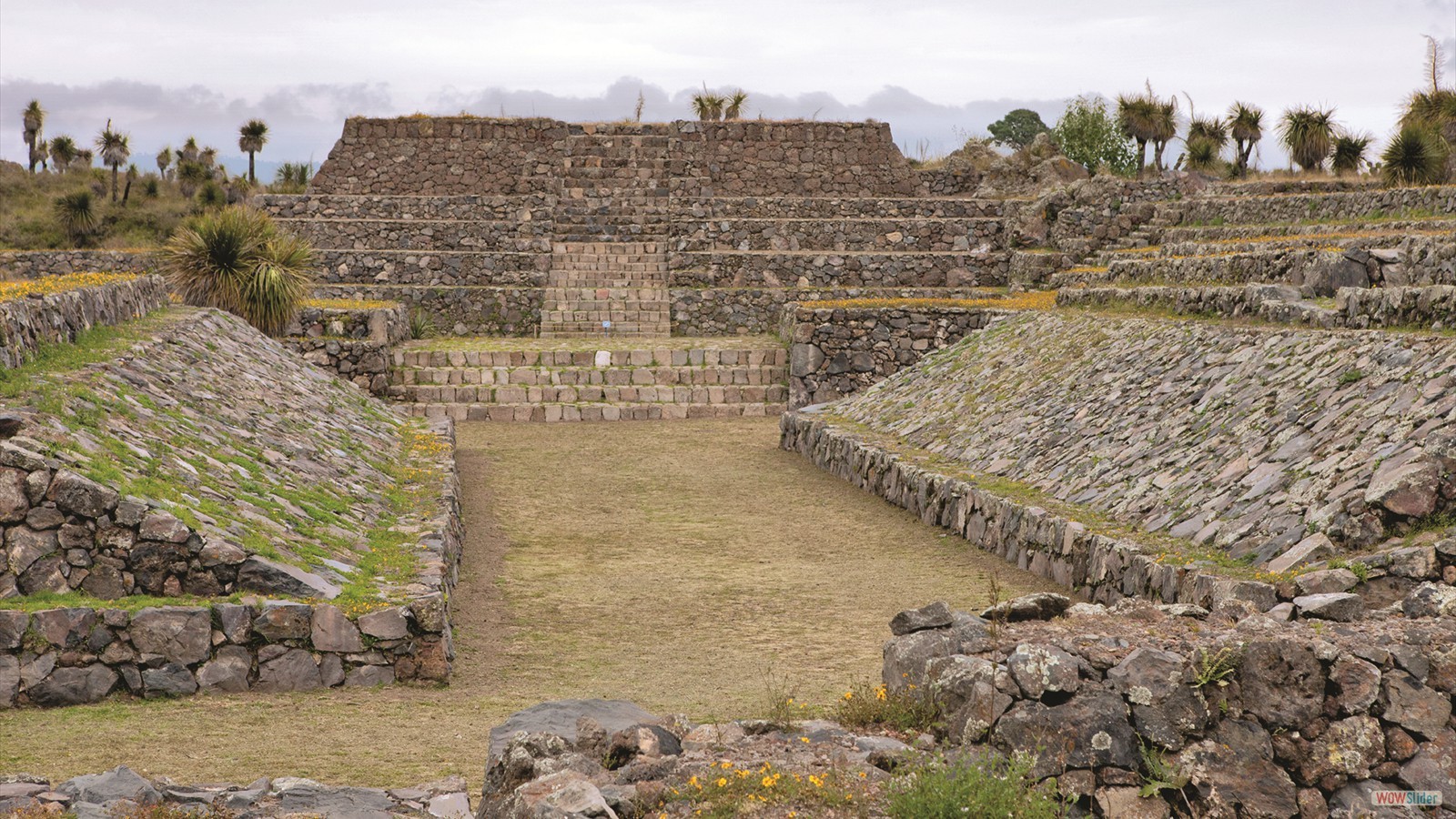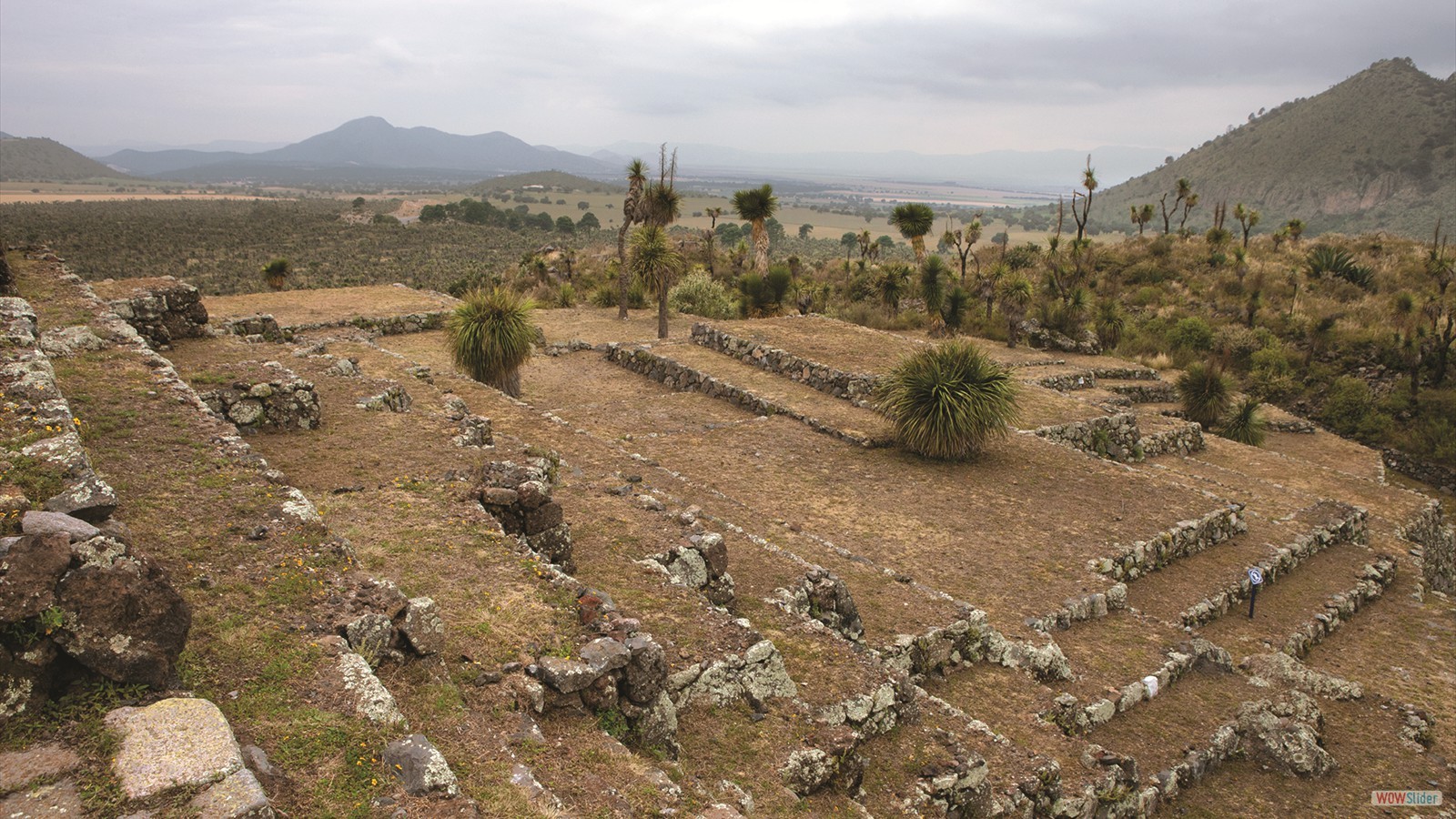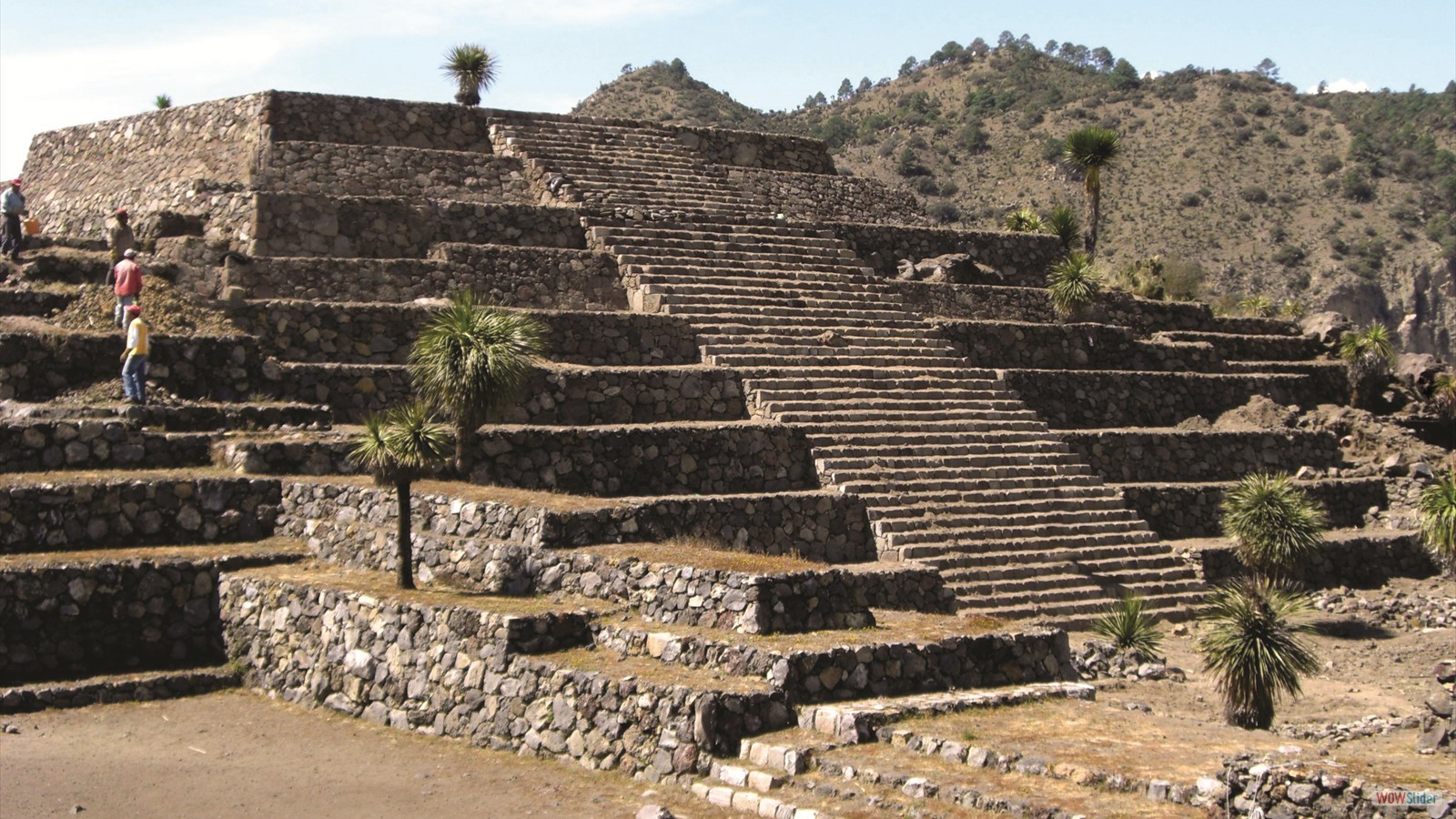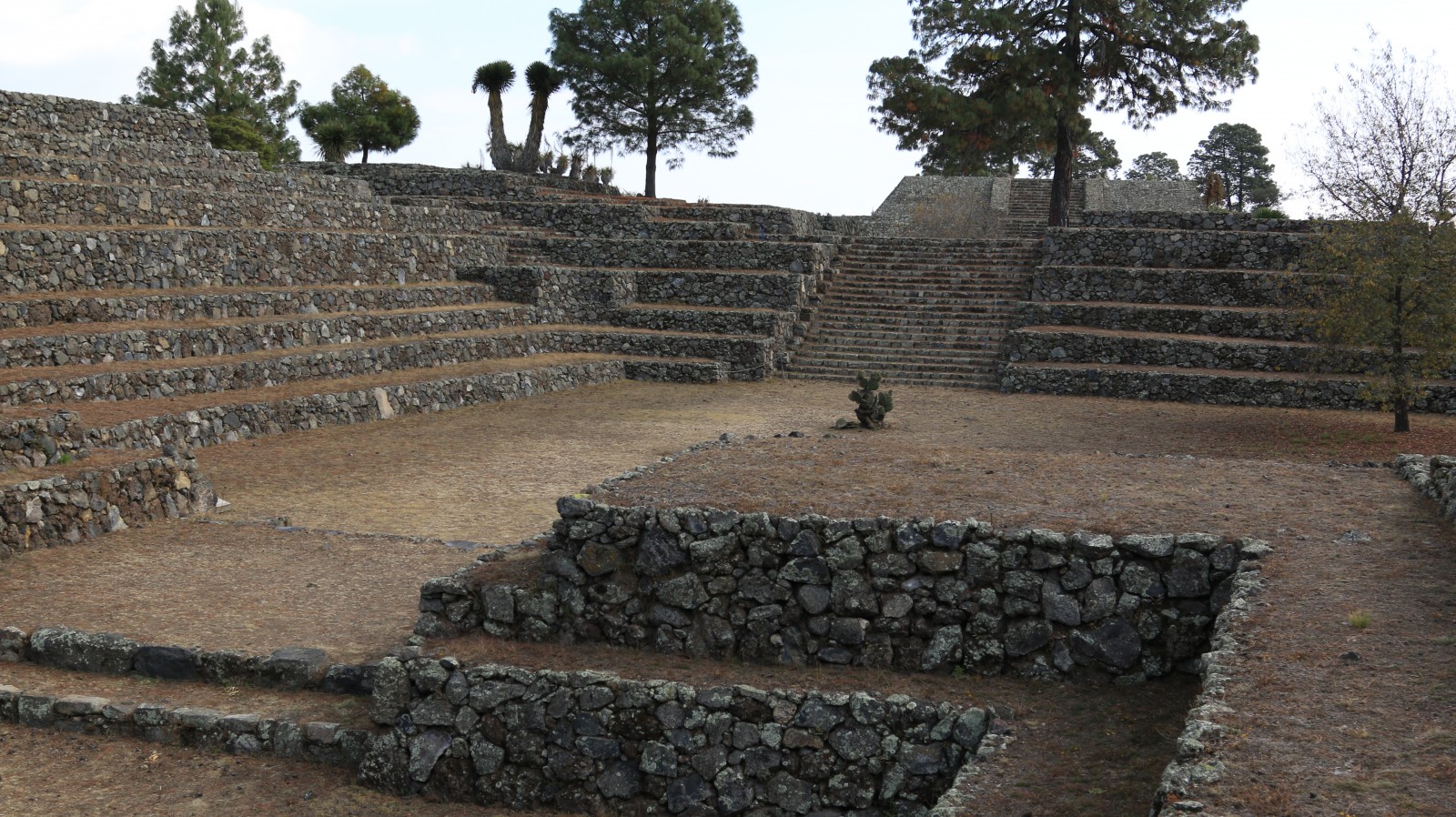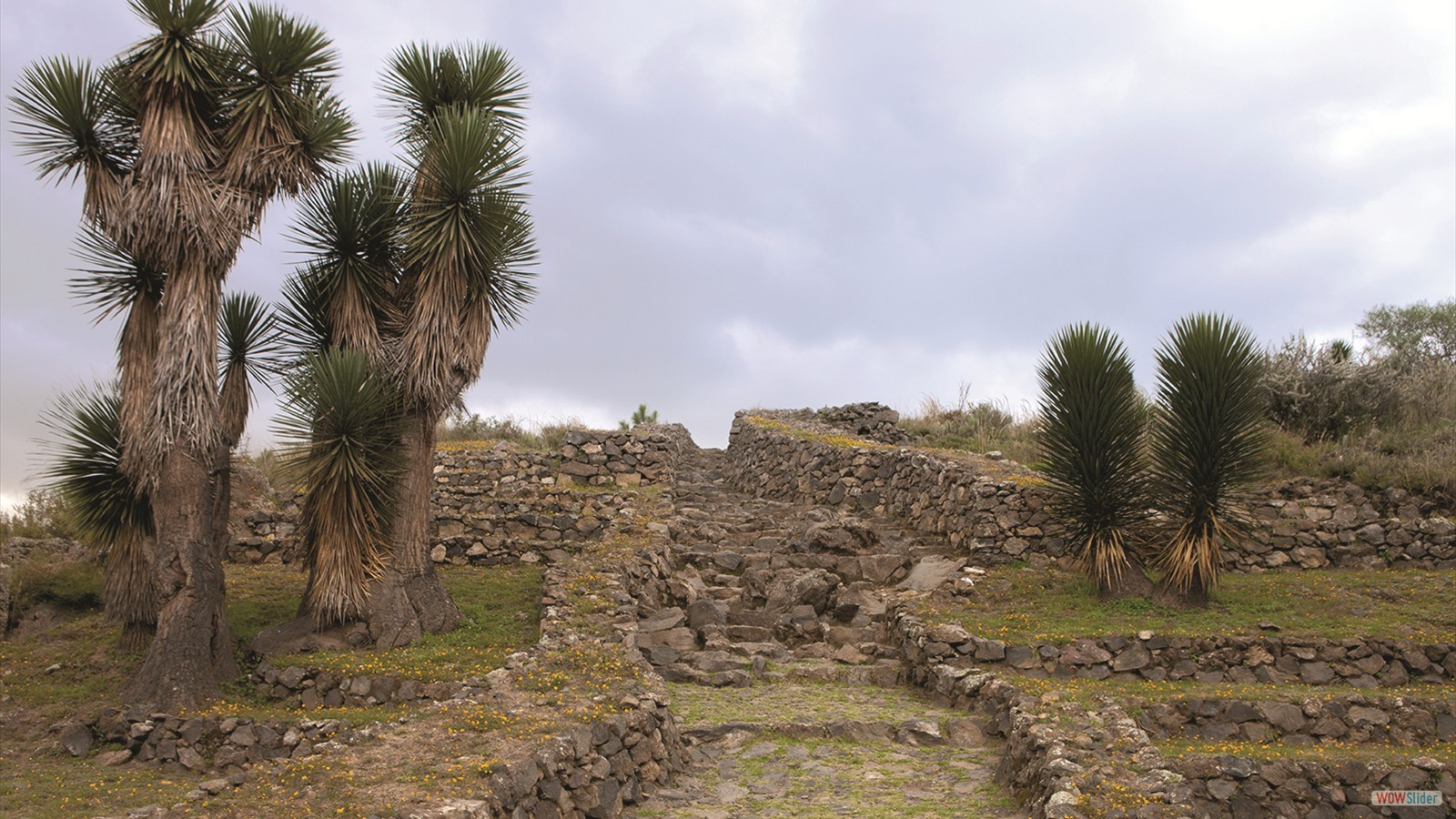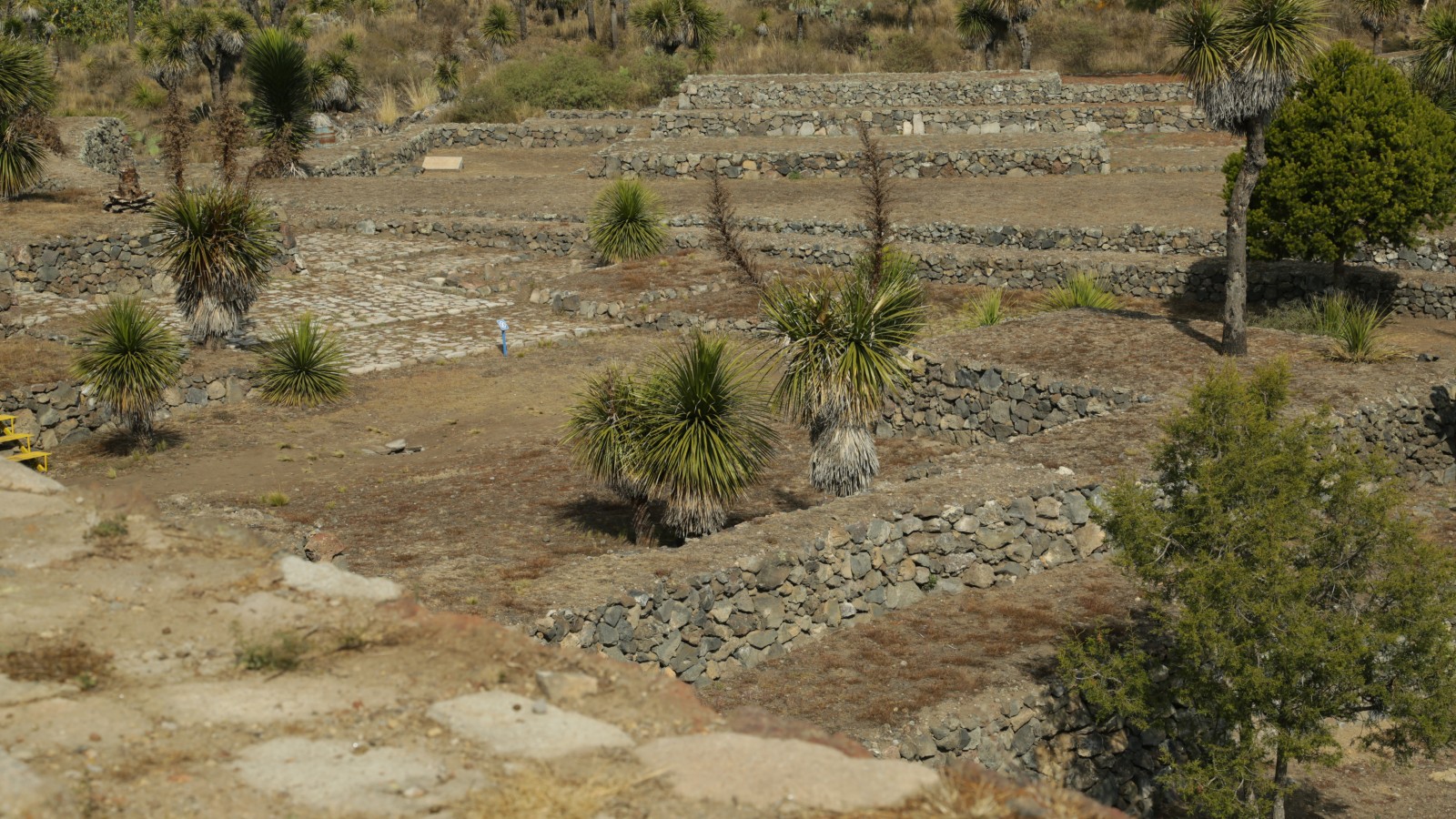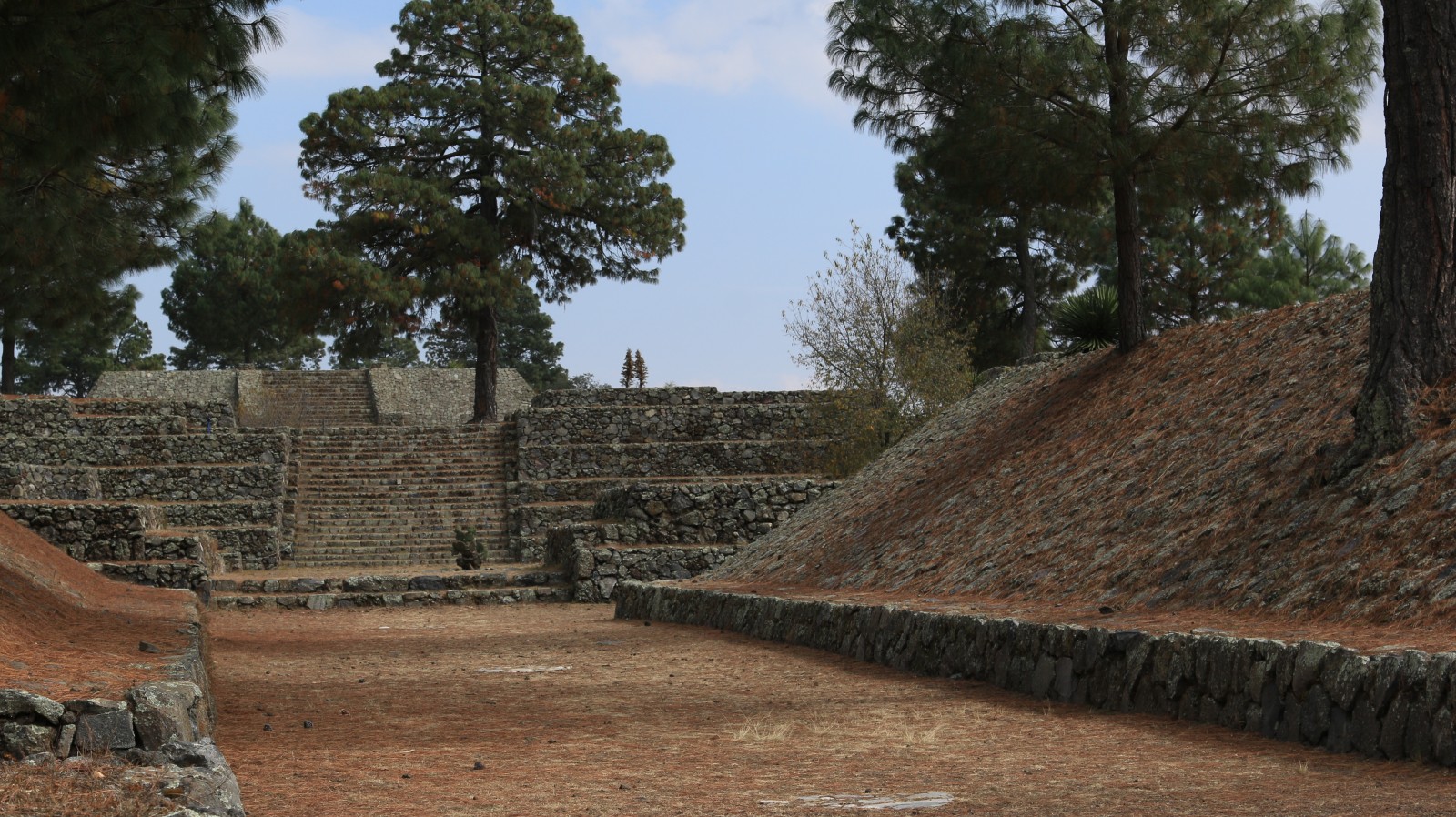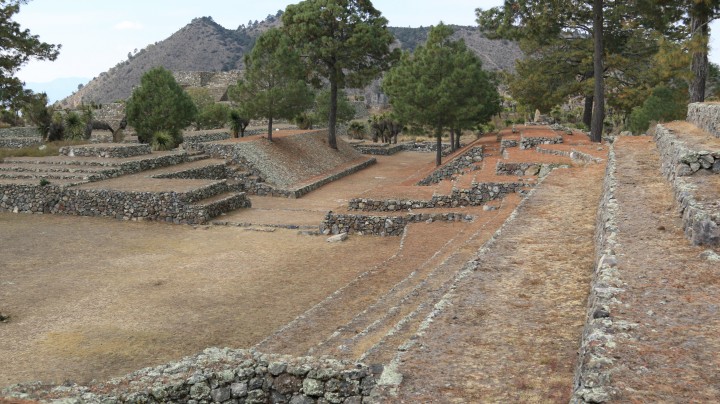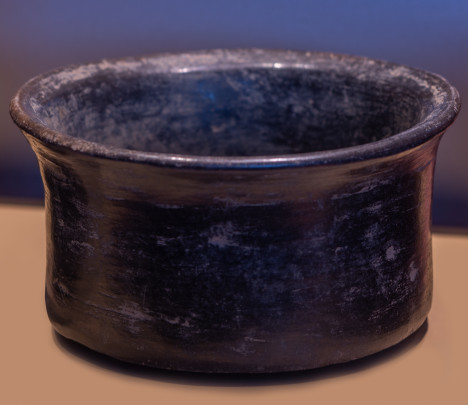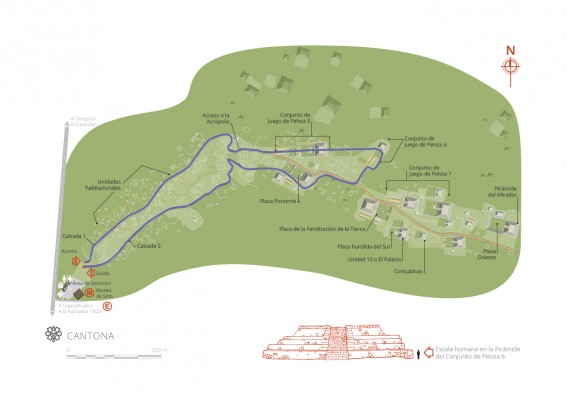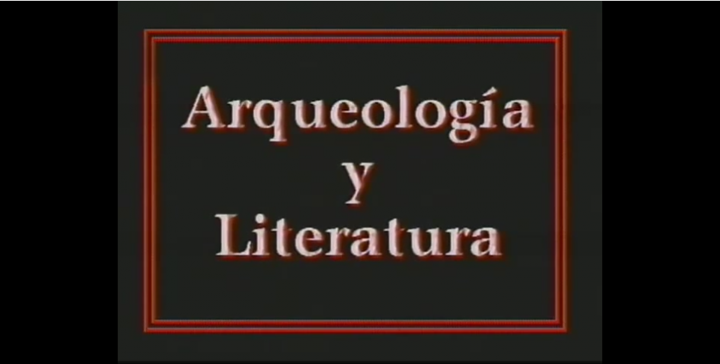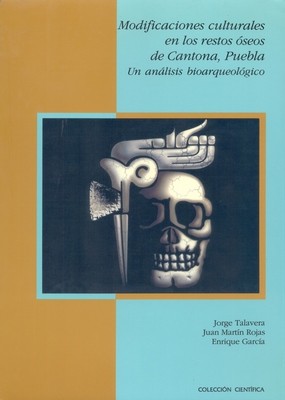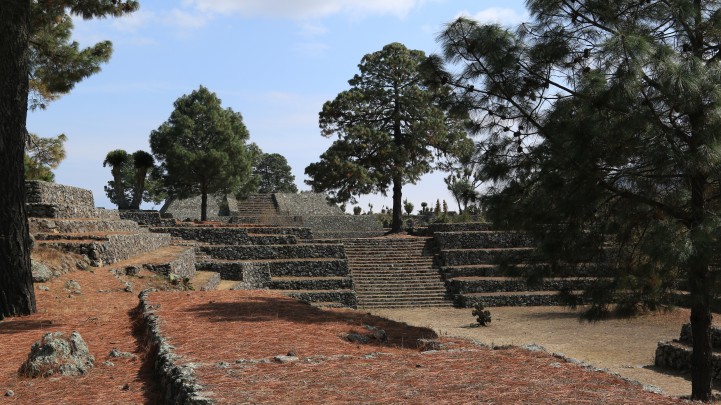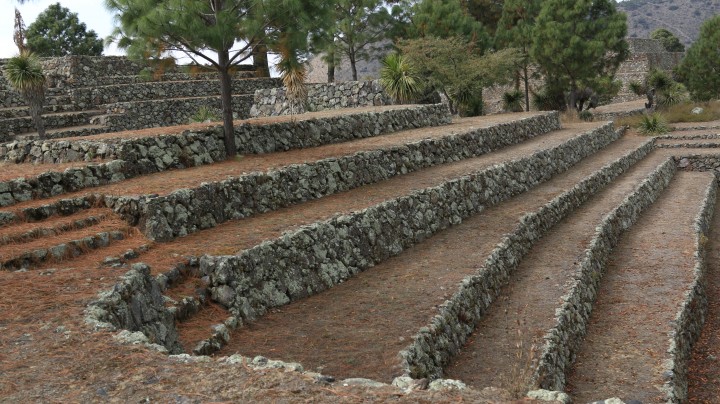Cantona
House of the Sun
A vast fortified pre-Hispanic city which controlled the trade route between the high central plateau and the Gulf of Mexico. Everything about it is extraordinary: the acropolis, the plazas, districts, approximately 4,000 interconnected streets and numerous ballcourts. Its skilled craftsmen worked obsidian.
About the site
Although this ancient metropolis stands upon a malpaís (an arid lava field with an uneven surface), its population inhabited it in residential units surrounded by periphery walls. We have found at least 2,700 residential units in the southern part (the most closely studied), and calculate that it had approximately 7,500 at its time of greatest occupation, when just over 90,000 people lived here. The presence of 27 or more Mesoamerican ballgame courts gave it unusual significance. Its cultural height came between 350 BC and 550 AD. After 600 AD, its population grew significantly, and in this time (until 900 AD) it was the largest and most important city on the Central Mexican Plateau.
The inhabitants of Cantona traded in artifacts made of obsidian which they obtained from the Oyameles-Zaragoza deposits a mere six miles northeast of the city. The state controlled production to ensure the exchange of goods and products required. In one area, we have found just over 350 official workshops.
Cantona is not mentioned in the historical sources, as it was abandoned approximately 500 years before the Spanish colonists arrived. Today, the southern part of the city has been explored and restored. This covers a large portion of the main civic and religious center, some streets, closed plazas with pyramids and six ballcourts, as well as residential units for both the elite and general population. Especially worth visiting are the Eastern Plaza or Mirador Pyramid, from which a large part of the south of the city can be seen, as are the state workshops, the Ballcourt 7 Complex and neighboring architectural complexes, as well as the Ballcourt 5 Complex, from which we can see the western side of the Acropolis. It is also recommended to visit the residential units surrounded by periphery walls, to examine the plinths upon which the houses were built and the comfort in which their inhabitants lived.
The inhabitants of Cantona traded in artifacts made of obsidian which they obtained from the Oyameles-Zaragoza deposits a mere six miles northeast of the city. The state controlled production to ensure the exchange of goods and products required. In one area, we have found just over 350 official workshops.
Cantona is not mentioned in the historical sources, as it was abandoned approximately 500 years before the Spanish colonists arrived. Today, the southern part of the city has been explored and restored. This covers a large portion of the main civic and religious center, some streets, closed plazas with pyramids and six ballcourts, as well as residential units for both the elite and general population. Especially worth visiting are the Eastern Plaza or Mirador Pyramid, from which a large part of the south of the city can be seen, as are the state workshops, the Ballcourt 7 Complex and neighboring architectural complexes, as well as the Ballcourt 5 Complex, from which we can see the western side of the Acropolis. It is also recommended to visit the residential units surrounded by periphery walls, to examine the plinths upon which the houses were built and the comfort in which their inhabitants lived.
Map
Did you know...
- The city was connected by a system of thoroughfares: causeways, roads, private thoroughfares and corridors.
- It traded in obsidian to the south and southeast of Mexico from at least 700 BC to approximately 900 AD.
- It is home to the largest number of ballcourts of any pre-Hispanic city found to date, with 27.
An expert point of view
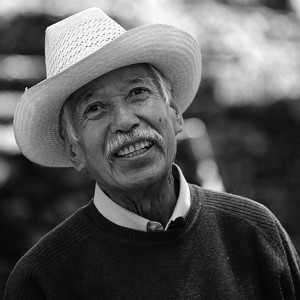
Ángel García Cook
Dirección de Estudios Arqueológicos
Practical information
Tuesday to Saturday from 10:00 to 17:00 hrs
$95.00 pesos
Se localiza al noreste de la ciudad de Puebla, entre los municipios de Tepeyahualco y Coyoaco.
From the city of Puebla, take Highway 150 México-Veracruz; in Amozoc turn onto Highway 129, Puebla-Teziutlán. In the town of Oriental, take the road to Tepayahualco, which connects with the road to the site.
From the city of Xalapa, take the Carretera 140D Amozoc-Perote and at the Cantona toll booth follow the road that leads to the site.
From the city of Xalapa, take the Carretera 140D Amozoc-Perote and at the Cantona toll booth follow the road that leads to the site.
Services
-
+52 (276) 111 67 58
-
This email address is being protected from spambots. You need JavaScript enabled to view it.
Directory
Coordinador Administrativo de la Zona Arqueológica
David R. Cuevas Pastrana
This email address is being protected from spambots. You need JavaScript enabled to view it.
045 276 111 67 58
Servicios Educativos
Clemente Gómez Fernández
This email address is being protected from spambots. You need JavaScript enabled to view it.
045 222 192 93 50
Taquilla
María Libia Miñón Crespo y Angélica Miñón de Cristóbal
045 282 108 10 44
Tienda de publicaciones y reproducciones INAH
Águeda Hernández Hernández
This email address is being protected from spambots. You need JavaScript enabled to view it.
045 276 107 10 50

